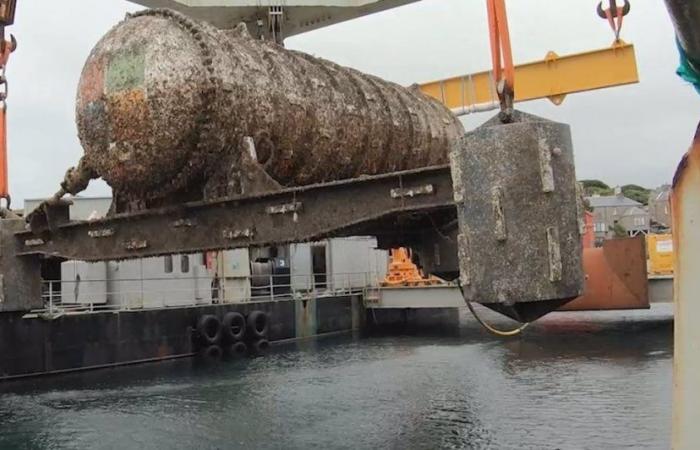
MADRID, June 25 (Portaltic/EP) –
Microsoft has shared that his Undersea data center experiment, Project Natick, has now completed and that, although they do not plan to build new centers of these characteristics, it worked with good results and, therefore, They will apply everything learned to other terrestrial facilities.
Project Natick is an initiative that Microsoft It began developing in 2013. Specifically, a data center installed at the bottom of the seanear the Orkney Islands (Scotland), which includes 864 servers and works with renewable energy, such as solar, wind and tidal energy.
This experiment began to work in the year 2018when the technology company commented that with it it was looking adapt to exponential growth in data center demand near population centers, as well as promoting the use of renewable energies for its operation.
To do this, Microsoft teamed up with the company that specializes in engineering ships and military submarines. Naval Group, together with whom they developed a hermetic infrastructure approximately 12.19 meters long which contained the servers and a cooling system similar to that commonly used in submarines: the system channeled seawater through the radiators of each of the 12 server racks to return to the ocean.
Two years after launching it, Microsoft It brought its underwater data center to the surface to test its operation. At that time, the company confirmed that an eighth of the servers had failed with respect to those that had failed in another data center that they had on land for comparison, in which the same components were used.
That is, in the submerged data center six servers out of 864 broke down, while in the one installed on land eight servers stopped working, in the same period of time.
Likewise, Microsoft also found that, compared to data centers on land, submarines require less maintenance and less resource consumptionby being powered by renewable energies.
END OF THE NATICK PROJECT
Since then, the technology company had not shared information about the Natick project again. Now, the Head of Microsoft’s Cloud Operations and Innovation (CO+I) division, Noelle Walshhas shared, in statements to the DCD media, that this experiment underwater data center is no longer active.
Walsh has pointed out that, although the results of the experiment were positive, the technology does not plan to build any underwater data center “anywhere in the world”while ensuring that they will use everything learned in the process to implement it in current data centers.
“My team worked on it and it worked. We learned a lot about below sea level operations, vibrations and server impacts. So We will apply those learnings to other cases“explained the directive.
He has also clarified that one of the reasons why the project had good results is because, being submerged in the sea, it had very constant external temperatures, which helped its cooling.
Another factor that they consider to have influenced its proper functioning and maintenance has been the use of inert nitrogen gaswhich was used within the infrastructure instead of the reactive oxygen gas used in data centers on land.
With all this, Walsh has indicated that they are currently learning from other industries on topics related to roboticsto use it in issues such as transporting heavy servers or other types of automation of this type.
Microsoft has also indicated that although they currently do not have submerged data centers, the technology will continue to use the Natick project as a basis to “research and explore new concepts on the reliability and sustainability of data centers, for example, with liquid immersion.

